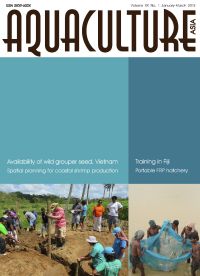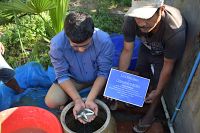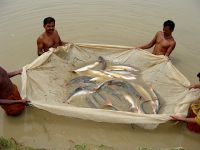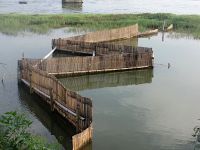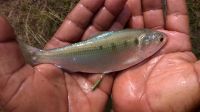Aquaculture Asia Magazine, January-March 2023
23 February 2023 | 27519 views | .pdf | 26.9 MB | Aquatic plants, Freshwater finfish, Hatchery and nursery, India, Inland aquaculture, Livelihoods, gender and social issues
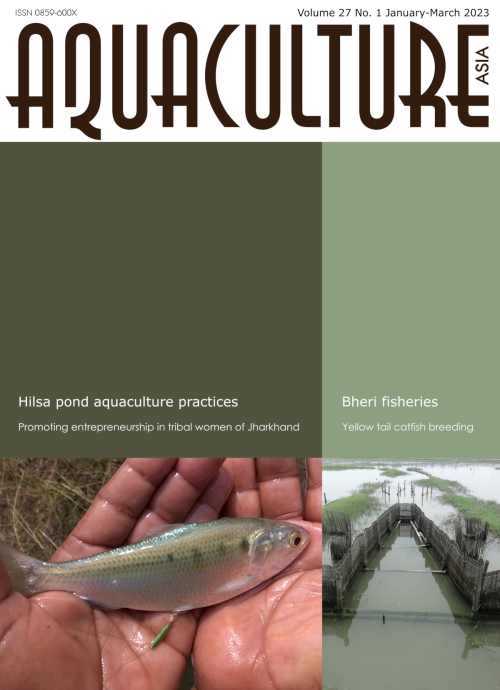
In this issue:
- Augmenting entrepreneurial attitude among tribal women of Jharkhand through a skill development programme in fish value added products
Stanzin Gawa and A.K Singh - Culture of hilsa, Tenualosa ilisha in freshwater ponds: Progress and prospects in farming practice
D.N. Chattopadhyay, A. Chakraborty, P.K. Roy, R.N. Mandal, A. Das, A. Hussan, S. Adhikari, B.N. Paul, B.R. Pillai and S.K. Swain - Present status of medium-saline ‘bheri’ fishery and integrated mangrove aquaculture in West Bengal, India: A short study, Part I
Subrato Ghosh - Information for farmers on yellow tail catfish, Pangasius pangasius, for easier captive production
S.K. Sahoo, S. Ferosekhan, S.N. Sahoo, P.K. Tiwari, B. Mishra and S.S. Giri - Captive breeding and larval rearing of Cirrhinus reba, a small indigenous fish of aquaculture importance
Kaustubh Bhagawati, Sushanta Borthakur, Pronob Das, Sangipran Baishya, Pabitra Kr Saharia, Bipul Phukan, and Binod Kalita - NACA Newsletter
Creative Commons Attribution.
